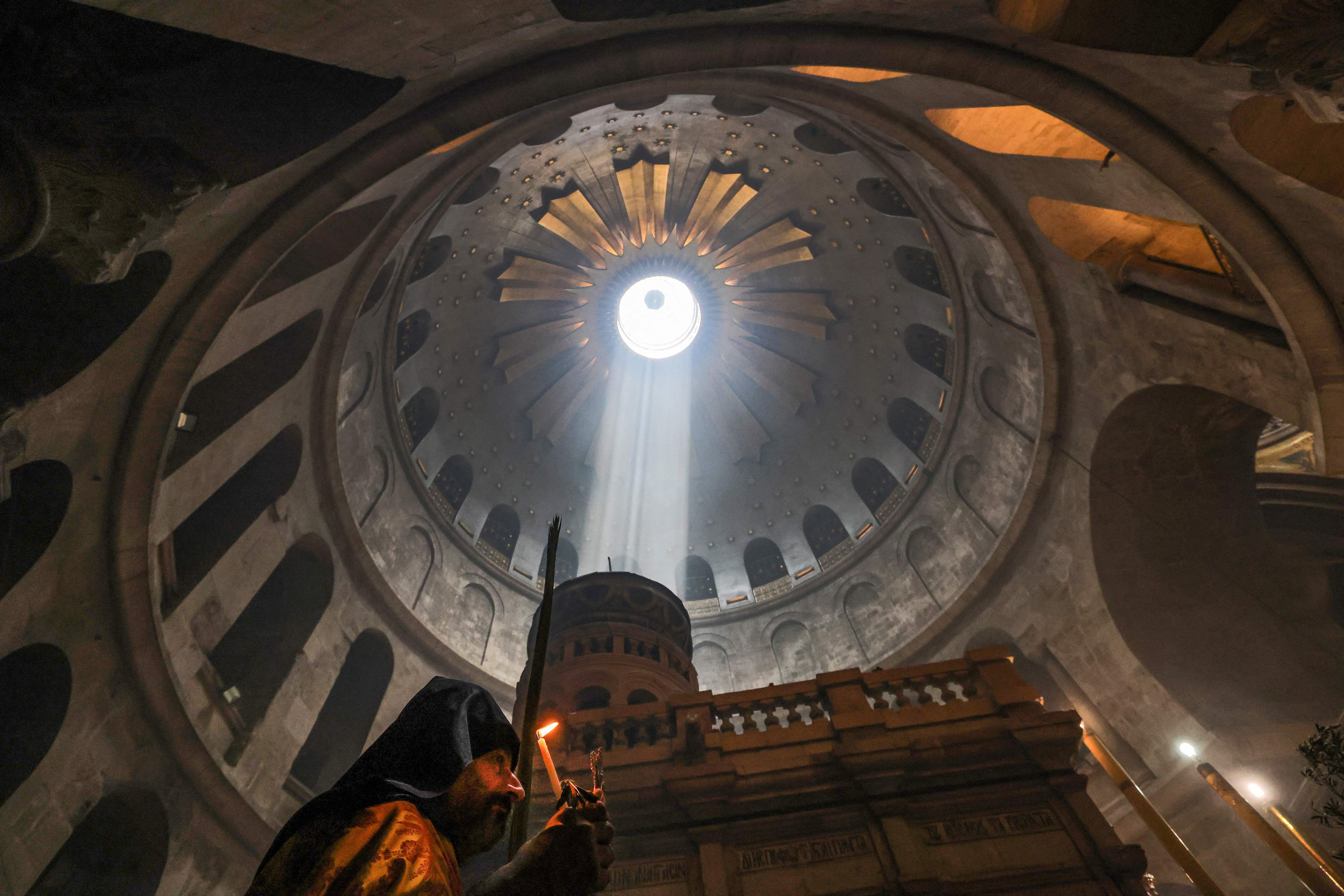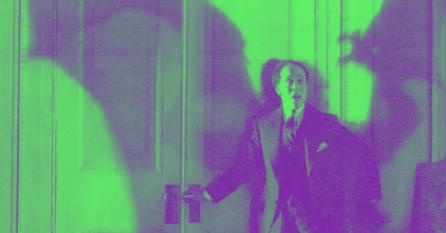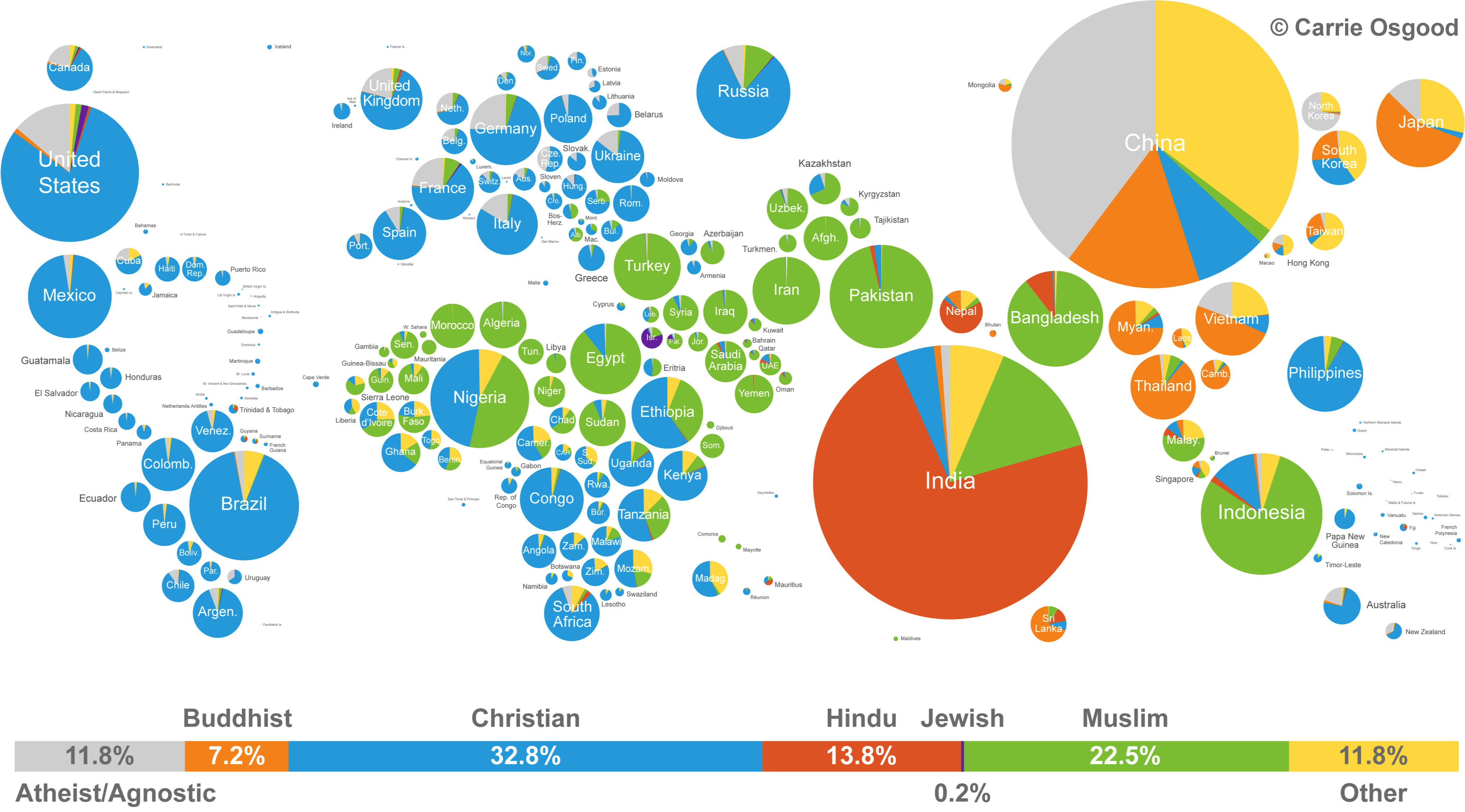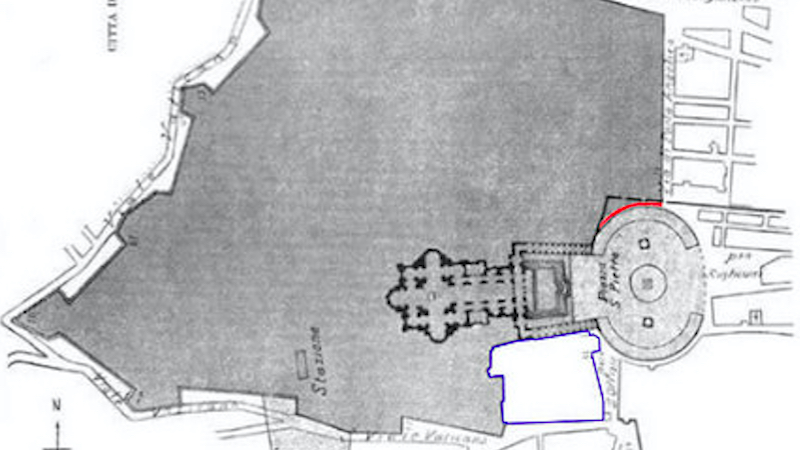A world map of Virgin Mary apparitions
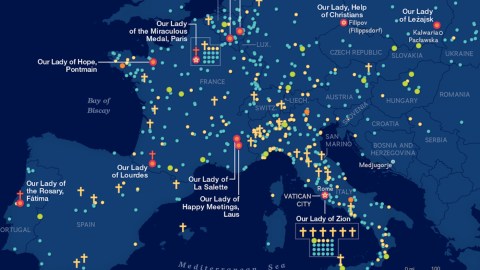
National Geographic / Michael O'Neill (Miraclehunter.com)
- For centuries, the Virgin Mary has appeared to the faithful, requesting devotion and promising comfort.
- These maps show the geography of Marian apparitions – the handful approved by the Vatican, and many others.
- Historically, Europe is where most apparitions have been reported, but the U.S. is pretty fertile ground too.
The divine is supernatural, but religion is very much of this world. The way people worship even has an impact on their physical surroundings. Here’s a telltale sign that you’re in Catholic country: chapels, shrines and grottoes dot the roadside. The latter are replicas of the cave in southern France where the Virgin Mary appeared to a local peasant girl in the early 19th century.
Those Marian apparitions themselves are another peculiar point of contact between faith and the world. Typically, they happen in times of crisis to young children from a humble background. They are often the only ones able to see the apparition. The visitations sometimes reoccur over a prolonged period. If the Virgin speaks to those who can observe her, it is to ask for a chapel or church to be built, to implore the faithful to be more devout, and/or to offer warnings for the future. Witnesses are often able to report in great detail on the dress and attributes of the apparition, but mostly there is no direct contact between the Virgin and the observers.
What is a Marian apparition?
Marian apparitions are generally associated with Catholicism, which has great devotion for Mary, the mother of Jesus. Despite her being the mother of Christ, the church does not consider Mary to be divine herself. According to Catholic doctrine, the age of public revelation ended when John, the last apostle, died around the year 100 AD. Marian apparitions therefore are ‘private revelations’, illuminating aspects of faith but never revealing new ones.
Apparitions often are the object of ridicule. Some may be fraudulent. Most do not get an official church approval, neither from the local bishop or from the Vatican. Unrecognized apparitions may thus lead to schisms with the official church. The visionary and their followers may decide to found their own independent movement or join existing sects. Either path is usually characterized by a traditionalist approach to the faith, often rejecting the innovations of the Second Vatican Council.

Outside Europe, the U.S. leads the world in Marian apparitions – all but one unrecognized by the Catholic church.
Image: National Geographic / Michael O’Neill (Miraclehunter.com)
A world map of Marian apparitions

The Virgin Mary tends to appear in regions mostly inhabited by Catholics.
Image: National Geographic / Michael O’Neill (Miraclehunter.com)
These maps, produced by National Geographic, show the geography of Marian visitations, in Europe and in the rest of the world.
- Crosses show where the Virgin Mary appeared to a future saint.
- Yellow dots mark visitations related by tradition (but not attested by the Vatican).
- Blue dots denote more recent, but as yet unconfirmed apparitions.
- Green dots signify visions approved as ‘worthy of faith’, but not supernatural.
- Red dots mean a local bishop has ‘approved’ the apparition as genuine.
- Larger red dots (for named apparitions) mark those that have also been recognized by the Vatican.
In Europe, the Virgin’s favorite destinations appear to be Italy and France, followed by southern Germany (i.e. the Catholic half) and Belgium. Considering the traditional hold of the faith on Spain and Poland, the number of Marian apparitions is relatively small. A fair number in western Ukraine, but none in eastern Germany. A handful in Hungary, almost none in the Balkans (Medjugorje being the most notable exception). Ireland out-Marys England, and Scandinavia is entirely free of Holy Mothers.
The U.S. leads the rest of the world in the number of apparitions, although most are unrecognized. Two apparitions in Africa and one in Mexico are officially recognized by the Vatican. Here’s an overview of all Vatican-approved apparitions of the Virgin Mary.
Our Lady of Knock, Ireland
On 21 August 1879, the Virgin Mary, Saint Joseph and Saint John the Evangelist appeared to two women (both called Mary) outside a church in the village of Knock, County Mayo, Ireland.
They were joined by other witnesses, who also saw a cross and a lamb on a small altar behind the three figures. A witness further away described the scene as englobed in golden light.
The apparition lasted for nearly two hours, during which the witnesses – standing in the pouring rain – recited the rosary. Meanwhile, the ground around the apparition remained entirely dry.
A church commission judged the apparition ‘trustworthy’. Knock developed into a pilgrimage site. The apparition occurred at a time of agricultural strife and cultural crisis in Ireland, when the common language shifted from Gaelic to English.
That may explain why the apparition remained silent: the oldest witness knew no English, while the youngest knew no Gaelic. On 13 May 2017, that youngest witness, John Curry, was reinterred in Old St Patrick’s in Manhattan after his remains had been identified in an unmarked grave on Long Island.

Interior of the basilica of Pontmain. The blue color effect is created by the tinted windows.
Image: Michel GILE/Gamma-Rapho via Getty Images
Our Lady of Pontmain, France
On 17 January 1871, at the height of the Franco-Prussian War, 12-year-old Eugène Barbedette looked out at the night sky over Pontmain and saw a beautiful woman wearing a blue gown studded with stars and a black veil under a golden crown.
His 10-year-old brother also saw the apparition, but their parents, and other adults, saw nothing. Two other children described the apparition in the same detail as the two brothers. Adults could only see a triangle of stars.
After three hours, the apparition vanished. That same evening, Prussian forces inexplicably abandoned their advance towards the town. The children who saw the apparition later became priests and nuns.
Pontmain is a place of pilgrimage, also from Germany. Bob Hope and his wife donated funds for a chapel dedicated to Our Lady of Hope of Pontmain at the National Shrine of the Immaculate Conception in Washington DC.

Medal of the Immaculate Conception (a.k.a. ‘Miraculous Medal’), created by Saint Catherine Labouré in response to a request from the Blessed Virgin Mary.
Image: Xhienne, CC BY-SA 3.0
Our Lady of the Miraculous Medal, France
On 19 July 1930, a voice woke up the nun Catherine Labouré calling her to chapel, where the Virgin Mary told her that “times are evil in France and the world” and instructed Catherine to produce medallions that would confer graces on those that wore them.
The medallions proved very popular. Inscribed with the slogan ‘Ô Marie conçue sans péché, priez pour nous qui avons recours à vous‘ (‘O Mary, conceived without sin, pray for us who have recourse to thee’), they were influential in the Vatican’s promulgation, in 1854, of the dogma of the Immaculate Conception.
Sister Catherine spent the rest of her life caring for the sick and elderly. Her body, now encased in glass in Paris, was discovered to be incorrupt. She was canonized in 1947. Pope John Paul II used a variation of the medallion’s image as his coat of arms.

The Chapel of Our Lady in Beauraing.
Image: Jean-Pol Grandmont, CC BY 3.0
Our Lady of the Golden Heart, Belgium
Between November 1932 and the next January, the Virgin Mary appeared a total of 33 times to five children between 9 and 15 in the small Belgian town of Beauraing.
The lady, dressed in a long white robe, said she was the Immaculate Virgin, requested that a chapel be built at the site of her apparition, and asked the children – and everybody – to pray. During one of the last visitations, she revealed her golden heart.

The miraculous spring of Our Lady of Banneux.
Image: Johfrael, CC BY-SA 3.0
Virgin of the Poor, Belgium
A few days after the Virgin’s last apparition in Beauraing, she appeared in the nearby town of Banneux. Between 15 January and 2 March 1933, 12-year-old Mariette Beco saw a lady in a white gown and blue sash who claimed to be the Virgin of the Poor, and stated: “Believe in me and I will believe in you.”
The Virgin asked Mariette to put her hands in a small spring, ordaining it for healing for all nations. A chapel is built where the Virgin requested it. The Marian apparition of Banneux carries two titles: Our Lady of the Poor and Queen of Nations.
Mariette was made fun of, even by her own grandmother and aunt. Others tauntingly called her ‘Bernadette’, after the French girl who had visions of Mary in Lourdes. Mariette married and led a quiet life. In 2008, three years before her death, she said: “I was just delivered the message. The messenger is of no importance.”

The basilica at Filipov.
Image: Kmenicka, CC BY 3.0
Our Lady, Help of Christians, Czech Republic
At four in the morning on 13 January 1866, the Virgin Mary appeared at the sickbed of Magdalena Kade. Mary, dressed in white and wearing a golden tiara, pronounced Magdalena healed from her long illness. Many miraculous healings were subsequently reported. A church (later elevated to basilica-status) and convent were built on the location, which is sometimes called the ‘Lourdes of Bohemia’.
The miraculous nature of Magdalena’s sudden cure was questioned by her contemporaries. In 2008, German journalist Kerstin Schneider – a distant relative of Magdalena Kade – draws a parallel with the clinical history of her great aunt Lina Marie Schöbel, a schizophrenic who all of a sudden declared she was ‘Jesus’, and who was exterminated by the Nazis for being insane.

The inside of the basilica at Gietrzwald, the ‘Polish Fatima’.
Image: Mazaki, CC BY-SA 4.0
Our Lady of Gietrzwald, Poland
On 27 June 1877, a ‘Bright Lady’ showed herself to 13-year-old Justyna Szafrynska and a day later also to her friend Barbara Samulowska. The lady appeared over the maple tree in front of the church, seated on a throne with the infant Jesus on her lap, surrounded by angels.
She told the girls she was the Blessed Virgin Mary of the Immaculate Conception, and she wished them to say the rosary every day. The Virgin blessed a spring, said the sick would be healed and asked that they too pray the rosary.
Asked what happens to people who swear falsely, the Holy Mother said that “Such person is not deserving to go to Heaven (and) is induced to do it by Satan”.
The Prussian authorities saw the apparitions as an expression of Polish nationalism and sought to suppress the event, even imprisoning the local parish priest.
Our Lady of Lezajsk, Poland
In 1578, woodcutter Thomas Michalek saw a bright light in the forest. It was the Virgin Mary, who asked him to alert the authorities to build a church on the site. Thomas was scared and did nothing.
The Virgin then reappeared and instructed him to take action. Which he did – but he was not believed. In fact, the local curate took him to court. After the curate’s death, a small chapel was finally built.
By the way, Lezajsk is also a place of pilgrimage for Jews, who come to visit the tomb of 18th-century rabbi Elimelech, one of the founders of the Hasidic movement.

Lithuanian pilgrims on the way to Šiluva.
Image: CD, CC BY-SA 3.0
Our Lady of Šiluva, Lithuania
In the summer of 1608, some children tending sheep reported seeing a beautiful lady holding a baby on the spot where a church had stood, and she was weeping. The children returned the next day with some villagers, including a Calvinist minister. They all saw the lady as well.
A new Catholic church was built on the site of the old one, and eventually replaced by a much larger one to accommodate the multitudes of pilgrims – now the Basilic of the Nativity of Mary. The Chapel of the Apparition, built over the rock where the Virgin appeared, has the tallest steeple in Lithuania. Pilgrims kiss the rock itself, which is accessible under the chapel’s altar.
For its devotion to the Virgin, Pope Pius XI entitled Lithuania as Terra Mariana (‘Maryland’). Until World War II, processions of pilgrimage to Šiluva would start in towns all over Lithuania. Our Lady of Šiluva is the patroness of those who have lapsed from the Catholic faith, and of those who pray on their behalf.

Sanctuary of Notre-Dame de la Salette.
Image: Fphoto, CC BY-SA 4.0
Our Lady of La Salette, France
On 19 September 1846, two cowherders, Maximin Giraud (11) and Mélanie Calvat (15), reported seeing a ‘beautiful lady’ in the mountains, wearing a pearl-studded white robe and a gold apron. Her face buried in her hands, she was weeping bitterly. She spoke to them, first in French, then in the local language, Occitan.
The apparition urged people to respect the seventh day and the name of God, sorrowfully threatening punishment (including a scarcity of potatoes). She asked that her message be spread to the world. Each child received a secret, after which the lady vanished.
Some observers at the time considered the apparition at La Salette a ‘pious fraud’. Two priests specifically accused Constance Saint-Ferréol de La Merlière, a former nun, of having ‘dressed up’ as the Mother of God, inculcating the two credulous teenagers with her own religious agenda. Mademoiselle de La Merlière sued the priests for defamation – and lost, twice.
In 1852, the Missionaries of Our Lady of La Salette were founded. The order still has missionaries serving in many countries. The shrine remains popular with traditionalist believers and the Charismatic Movement within the Catholic church.

The Virgin appears to Benoîte.
Image: AntonyB, CC BY-SA 3.0
Our Lady of Happy Meetings, France
In May 1664, Benoîte Rencurel, a 17-year-old shepherdess in southeastern France, saw an apparition of St Maurice, a third-century martyr greatly revered in her home region. He warned her that locals eyed her flock and counseled that she should go to a nearby valley, where she would see the Virgin Mary.
In a grotto in the Valley of Kilns, she discovered Mary, holding baby Jesus. The Virgin directed Benoîte to go to the village of Laus, where she was instructed to build a chapel where sinners would be converted and the Virgin promised to appear often.
Some of the pilgrims to Laus have themselves become saints, including Eugene de Mazenod, founder of the Oblates of Mary Immaculate. The Marian apparitions at Laus lasted until 1718. Despite their antiquity, the apparitions of Our Lady of Laus were recognized by the Holy See only in 2008.

Crowds at the Sanctuary of Our Lady of Fátima on 12 May 2017 for the centennial of the first apparition.
Image: Centro Televisivo Vaticano, CC BY 3.0
Our Lady of Fátima, Portugal
Between 13 May to 13 October 1917, ‘a lady more brilliant than the sun’ appeared six times to three Portuguese shepherd children, Lúcia dos Santos and her cousins Francisco and Jacinta Marto.
The lady asked them to devote themselves to the Holy Trinity and to pray the Rosary every day; prayer would end the Great War then still raging. She also showed them a vision of hell and entrusted them with three secrets.
The children’s visions drew thousands of visitors and upset the political balance in the country, with a young, anticlerical republic fighting off a strong conservative reaction. The children were even briefly jailed, and variously ordered to reveal the secrets or admit that they had lied. The local administrator even threatened that he would boil them one by one in a pot of oil.
At the Virgin’s last appearance, many of the up to 100,000 visitors reported a ‘Miracle of the Sun’: multicolored light and erratic movement from the sun. Others saw nothing out of the ordinary.
As predicted by the Virgin, Francisco and Jacinta died soon afterward, in the Spanish Flu pandemic that started in 1918. Lucia became a nun, and sporadically saw the Virgin again later in life, as well as Jesus. She died in 2005, aged 97.
Already in the first few years after the events, Fátima attracted millions of visitors. Our Lady of Fátima was popular among anticommunist and traditionalist Catholics. Pope John Paul II credited Our Lady of Fátima with saving his life in the attempt on his life of 13 May 1981 – the Feast of Our Lady of Fátima. The Pope donated the bullet that wounded him to the Sanctuary at Fátima. Fátima currently is one of the world’s most popular centers of pilgrimage.

Religious souvenirs (‘bondieuseries’) in Lourdes.
Image: Jean-Noël Lafargue
Our Lady of Lourdes, France
On 11 February 1858, ‘a petite damsel’ spoke to 14-year-old Bernadette Soubirous in the grotto of Massabielle about a mile from the southern French town of Lourdes. The lady, who appeared 17 further times, revealed herself to be Our Lady of the Immaculate Conception and asked that a chapel be built on that spot.
Bernadette’s vision has similarities to that of Anglèze de Sagazan, a 12-year-old shepherdess who in the 16th century saw the Virgin at a spring in nearby Garaison. Pilgrimages to Garaison were soon eclipsed by those to Lourdes.
The Virgin revealed a spring to Bernadette and directed pilgrims to drink from and wash in it. The water, provided free of charge to pilgrims, is a popular memento of a trip to Lourdes. Some have claimed to have been cured by it.
Millions of pilgrims, many suffering from illnesses, travel to Lourdes each year. Lourdes now is a major pilgrimage site, and has more hotel rooms than any other place in France, with the exception of Paris.
The Lourdes Bureau Médical has documented around 70 miraculous healings at the site. Bernadette was canonized as a saint in 1933. The apparition at Lourdes is also recognized by the Anglican church, which has its own Marian Shrine at Lourdes.

Bust of Marie-Alphones Ratisbonne at the Ratisbonne Monastery in Jerusalem.
Image: Gilabrand, CC BY 3.0
Our Lady of Zion, Italy
On 20 January 1842 while visiting Rome, Marie-Alphonse Ratisbonne, an anti-Catholic Jew, had a vision of the Virgin Mary. He converted to Catholicism and began a ministry for the conversion of the Jews.
Together with his brother, who had converted and become a priest years before, he founded the Sisterhood of Our Lady of Sion. Ratisbonne eventually joined the priesthood himself and becomes a Jesuit.
In 1855, he moved the sisters to Jerusalem, where he founds the Convent of Ecce Homo and the Convent of St John.

Joyous entry of Our Lady of Kibeho in the parish of St Jean Bosco in Rango.
Image: Paroisse de Rango
Mother of the Word, Rwanda
On 28 November 1981, the Virgin Mary first appeared to Alphonsine Mumureke, and over the next few years also to two other pupils at Kibeho College, a girls’ school in southwestern Rwanda.
She identified herself as Nyina wa Jambo (‘Mother of the Word’ in Kinyarwanda) or Umubyeyi W’Imana (‘Mother of God’) and asked everyone to pray to prevent a terrible war – perhaps a premonition of the 1994 Rwandan Genocide, as tensions between Hutus and Tutsis were already rising back then.
The three women reported going on ‘mystic voyages’ with the Virgin during their individual visions, which could last for hours. Inexplicably, the women seemed to acquire so much weight during their visions that they could not be lifted off the ground.
Four other people in Kibeho reported apparitions – one met Christ in a beanfield – but these have not been approved by the Holy See.
The apparition was named ‘Our Lady of Sorrows’ two years before the start of the genocide in 1994. Marie Claire Mukangango, one of the three young women receiving visions in the 1980s, was among those killed, together with her family, in a massacre in Kibeho, in April 1995.

Apparition of the Virgin Mary on the roof of the Coptic church in Zeitoun.
Image: Public domain
Our Lady of Zeitoun, Egypt
On 2 April 1968, a Muslim bus driver thought he saw a lady standing on top of St Mary’s Coptic Church in Zeitoun, near Cairo and thought she was about to commit suicide. The police were called, but the gathered crowd quickly identified the figure as the Virgin Mary.
After a few minutes, the figure vanished. The lady returned a week later, again for a few minutes. After that, apparitions occurred up to several times a week, until 1971. The Vatican sent an envoy but left the investigation to the Coptic authorities.
Uniquely, the location of the apparition has a historical link to the Virgin Mary, at least according to Coptic tradition: It is said to be one of the places where the Holy Family rested on their flight from Bethlehem to Egypt.
Also unlike most other apparitions, the Zeitoun Virgin was seen by huge crowds – estimates vary from 250,000 to even millions, over the course of the four years the phenomenon lasted. Included were many Muslims, Egyptian president Nasser among them (Mary features prominently in the Quran as well). The phenomenon was also captured on camera.
Skeptics nevertheless see the apparitions at Zeitoun as a case of mass hysteria in a time of crisis; following Egypt’s defeat by Israel in the war of 1967, people felt let down by modernity and turned to religion.

The original image of the Virgin of Guadalupe.
Image: Public domain
Our Lady of Guadalupe, Mexico
On 9 December 1531, the Virgin appeared to Juan Diego, a native peasant, on the Hill of Tepeyac near Mexico City. Speaking to him in the local Nahuatl language, she asked for a church to be built on the site.
Juan Diego reported the sighting to the archbishop of Mexico, but he didn’t believe him and asked for a miraculous sign. The Virgin healed Juan Diego’s uncle and appeared to him as well, instructed Juan Diego to pick Castilian roses on top of the usually barren Tepeyac Hill, and transformed his cloak into an image of the Virgin.
A few days later, the cloak was displayed in a hastily erected chapel. Miracles started occurring almost immediately. Our Lady of Guadalupe became Mexico’s most popular religious symbol, and in the 19th century a rallying point for Mexico’s independence struggle against Spain.
Despite the fact that Juan Diego was canonized in 2002, some Catholic scholars doubt he ever existed. According to them, the cult of Guadalupe was designed to increase Catholic devotion among indigenous Mexicans. The image on the cloak, they point out, resembles contemporary Spanish artwork. Many believers nevertheless ascribe miraculous qualities to the cloak, which is exhibited in the Basilica, in a climate-controlled, bullet-proof casing.
Although Nahuatl origins have been proposed, it seems likely that the name Guadalupe, which became attached to the apparition, is a Spanish reference. Extremadura, the Spanish region where conquistador Hernán Cortés was born, has its own cult of Our Lady of Guadalupe, centered on a statue said to be carved by St Luke the Evangelist.
However, for native Mexicans, Our Lady of Guadalupe recalled Tonantzín, an Aztec earth goddess and serpent destroyer, whose temple previously stood on the same hill where the Basilica is now.
Our Lady of Guadalupe is the patron saint of Mexico, of the Americas, and of the unborn – and thus also a symbol for the Pro-Life movement. The Basilica of Our Lady of Guadalupe in Mexico City is the world’s most visited Catholic shrine, receiving millions of pilgrims every year.
Of the 386 claims of Marian apparitions in the 20th century, eight were approved and 79 rejected by the Catholic church, with no definitive verdict on the rest. In 2010, bishop David L. Ricken of Green Bay recognised the apparition of the Virgin to Adele Brise in 1859. Our Lady of Good Help, whose shrine is located in Champion, Wisconsin, is the first Marian apparition approved by the Church in the U.S. (although not yet by the Vatican).
The number of apparitions peaked in 1954 but has been on a steady decline since the mid-1980s, perhaps due to a lack of underage shepherds roaming the countryside.
Here’s one Marian apparition you’ve probably never considered: it’s on the flag of the European Union. Officially adopted by the (then) European Economic Community in 1985, the EU flag shows a circle of 12 gold stars on an azure background. It had originally been the symbol of the Council of Europe, who adopted it in 1955 on December 8, the feast of Mary’s Immaculate Conception.
Konrad Adenauer (Germany), Robert Schumann (France) and Alcide de Gasperi (Italy) were not just some of the major driving forces behind early European integration, they were also devout Catholics. In 1956, the Council of Europe donated a stained-glass window to Strasbourg Cathedral, showing the Virgin surrounded by twelve stars on a blue field.

Arsène Heitz, designer of the 12-starred flag, credited a passage in chapter 12 of the Book of Revelation as a source for the image. It refers to a woman “clothed with the sun, with the moon under her feet and on her head a crown of twelve stars.”
And that is why the number of stars on the flag does not refer to the number of member states (28 now, 27 after Brexit), but is in fact an emblem of Catholic devotion to Mary – despite the fact that the European Union is a non-religious entity.
Strange Maps #955
Got a strange map? Let me know at strangemaps@gmail.com.


